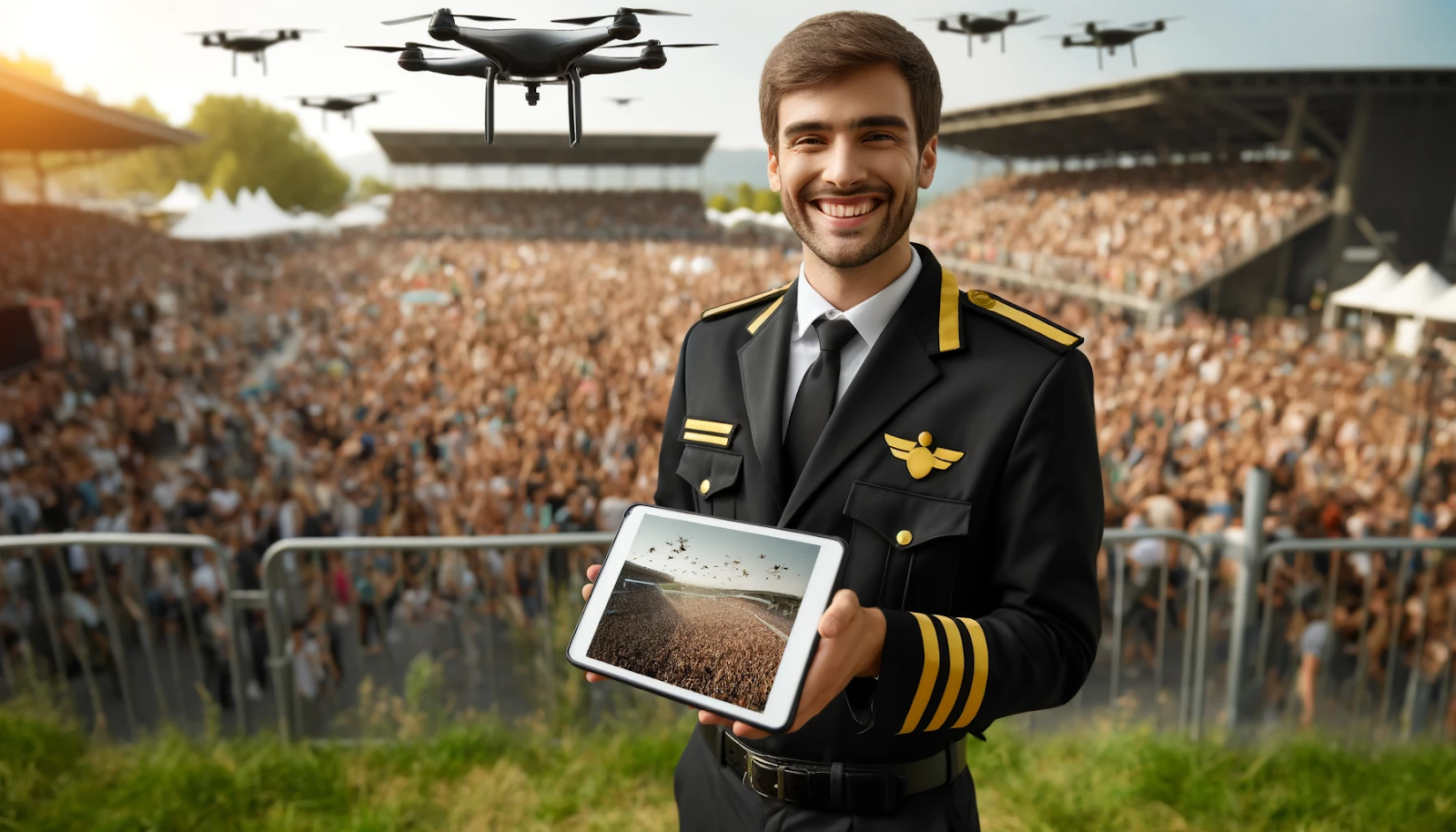Introduction
In today's fast-paced world, managing the security of large events is complex. Ensuring safety and quick response times is crucial with hundreds or thousands of people in attendance. Enter drone technology—a game-changer for aerial surveillance and crowd monitoring. This blog post explores the benefits and challenges of using drones for event security.
The Advantages of Drones in Event Security
- Aerial Perspective: Drones offer a bird’s-eye view, making it easier to detect potential security threats, monitor crowd movements, and identify bottlenecks.
- Rapid Deployment: Unlike stationary cameras or patrolling officers, drones can be quickly deployed to specific areas that require immediate attention.
- Real-Time Data: Drones equipped with high-resolution cameras and thermal imaging provide live footage, allowing security teams to respond promptly to situations.
- Cost-Effective: Reducing the need for large security teams on the ground, drones help minimize labor costs while increasing efficiency.
- Versatility: Beyond security, drones can monitor traffic flow and parking areas and even help coordinate emergency services.
Challenges to Consider
- Regulations and Compliance: Drone usage is governed by strict regulations. Security teams must ensure proper certifications and compliance with local laws.
- Battery Life: Most commercial drones have limited flight times, which requires strategic planning for recharging and deploying backup units.
- Privacy Concerns: Drones can inadvertently capture private data, which may raise privacy issues and require careful handling of surveillance footage.
- Interference and Malfunctions: Technical glitches or interference from other devices may hamper drone performance, necessitating a backup plan.
Strategies for Effective Drone Deployment
- Training and Certification: Ensure all drone operators are trained and certified according to the relevant aviation regulations.
- Collaborative Communication: Set up a direct communication channel between drone operators and ground security teams for coordinated responses.
- Redundancy Plans: Have additional drones or backup plans ready to handle potential malfunctions or emergency scenarios.
- Geo-Fencing: Program drones to operate within specific boundaries to avoid unauthorized areas and prevent regulatory violations.
Case Study: Efficient Security at a Music Festival
At a recent music festival with over 20,000 attendees, drones played a pivotal role in ensuring safety:
- Crowd Management: Drones helped security teams monitor crowd density, quickly identifying overcrowded areas and guiding people to safer zones.
- Emergency Response: A medical emergency was detected promptly using drone surveillance, allowing medical teams to reach the affected individual within minutes.
- Traffic Control: Parking areas were managed more effectively through live aerial views, reducing congestion and enabling smooth traffic flow.
Future of Drones in Security
Integrating AI and machine learning with drone technology will further enhance its capabilities. Predictive analysis of crowd behavior, facial recognition for identifying potential threats, and automated alerts for security breaches will redefine how events are secured.
FAQs
Q: Are there specific events where drones are particularly effective?
A: Drones excel at large events like concerts, festivals, sports games, and political rallies due to their ability to cover extensive areas swiftly.
Q: How do drones handle adverse weather conditions?
A: Many commercial drones are designed to handle mild rain and winds, but extreme weather can significantly affect their operation.
Q: Can drones replace on-ground security teams?
A: Drones complement ground teams by providing an aerial perspective. They are best used with on-site personnel for a comprehensive security strategy.
.png)
.png)
.png)

.png)
.png)

.png)
.png)
.png)
.png)
